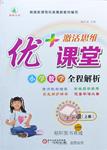题目内容
You do not need every word to understand the meaning of what you read. In fact, too much emphasis (强调) on separate words both slows your speed and reduces your comprehension.
First, any habit which slows down your silent reading to the speed at which you speak or read aloud, is inefficient. If you point to each word as you read, or move your head, or form the words with your lips, you read poorly. Less obvious habits also hold back reading efficiency (效率). One is "saying" each word silently by moving your tongue or throat; another is "hearing" each word as you read.
These are habits which should have been outgrown long ago. The beginning reader is learning how letters can make words, how written words are pronounced, and how sentences are put together. Your reading purpose is quite different, which is to understand meaning.
It has been supposed that up to 75% of the words in English sentences are not really necessary for expressing the meaning. The secret of silent reading is to find out those key words and phrases which carry the thought, and to pay less attention to words which exist only for grammatical completeness.
An efficient reader can grasp the meaning from a page at least twice as fast as he can read the page aloud. He takes in a whole phrase or thought unit at a time. If he “says" or "hears" words to himself, they are selected ones, said for emphasis.
1.This passage is mainly about ______.
A. improving eye movement
B. reading more widely
C. changing poor reading habits
D. reading as fast as you can
2.Saying each word to yourself as you read _____.
A. improves comprehension
B. increases reading speed
C. gives too much emphasis
D. reduces reading efficiency
3.Your reading purpose should be _____.
A. to understand all the words
B. to make fewer eye movements
C. to understand meaning
D. to understand the grammatical structures
4.While reading, efficient readers usually _____.
A. move their eyes quickly
B. take in whole phrases or thought units
C. point at key words
D. read only important points for speed
1.D
2.D
3.C
4.B
【解析】
试题分析:文章介绍了如何提高阅读的速度,不能太关注每个单词,也比能把每个单词都读出来,理解含义是最终目的,所以有效的阅读者是理解整个的短语和意思。
1.主旨题:从第一段的句子:too much emphasis (强调) on separate words both slows your speed and reduces your comprehension.可知这篇文章主要讲的是怎样提高阅读速度,选D
2.细节题:从第二段的句子:If you point to each word as you read, or move your head, or form the words with your lips, you read poorly. Less obvious habits also hold back reading efficiency (效率).可知把每个单词都读出来会放慢阅读速度,选 D
3.细节题:从第三段的句子:Your reading purpose is quite different; it is to understand meaning.可知阅读的目的是理解意思,选C
4.细节题:从最后一段的句子:He takes in a whole phrase or thought unit at a time. 可知有效的阅读者是理解整个的短语和意思,选B
考点:考查知识类短文

 激活思维优加课堂系列答案
激活思维优加课堂系列答案 活力试卷系列答案
活力试卷系列答案Section C
Directions: Read the following text and choose the most suitable heading from A-F for each paragraph. There is one extra heading which you do not nee
A.Choose a limited subject
B.Draw in black and white
C.Use only simple actions
D.Use words sparingly
AB.Revise and simplify
AC.Create easy-to-recognize characters
|
|
76.
Consider straightforward, uncomplicated actions for you characters. While the actions may be symbolic, such as pumping up for a business deal, it should be clear what the character in the drawing is doing
|
|
77.
Aim your satire at targets that can be “summarized” in a few easily recognized images, You might choose a single person, such as a rock star, or a group or institution—such as business people, a nation, Congress, or basketball players, Labels or dialogue can help identify characters, but remember that the less “work” your audience has to do, the more effective your cartoon will be .
|
|
78.
While brief, simple dialogue may be necessary to get your point across, make sure it’s easy to understand and doesn’t take up much room. If you rely too heavily on dialogue, you are really creating an illustrated story or play instead of a cartoon. Labels and captions, too, should be minimal and easy to understand.
|
|
79.
Consider subjects that are familiar to your audience and that can be encapsulated in a few words and images. Try characters actions, or ideas that become laughable with only a little exaggeration or an unlikely comparison.
|
|
76.
Eliminate all that is extraneous and reword your cartoon until its impact is as immediate as possible. In fashion circle, there is a saying: less is more which can be applied to creating a cartoon.